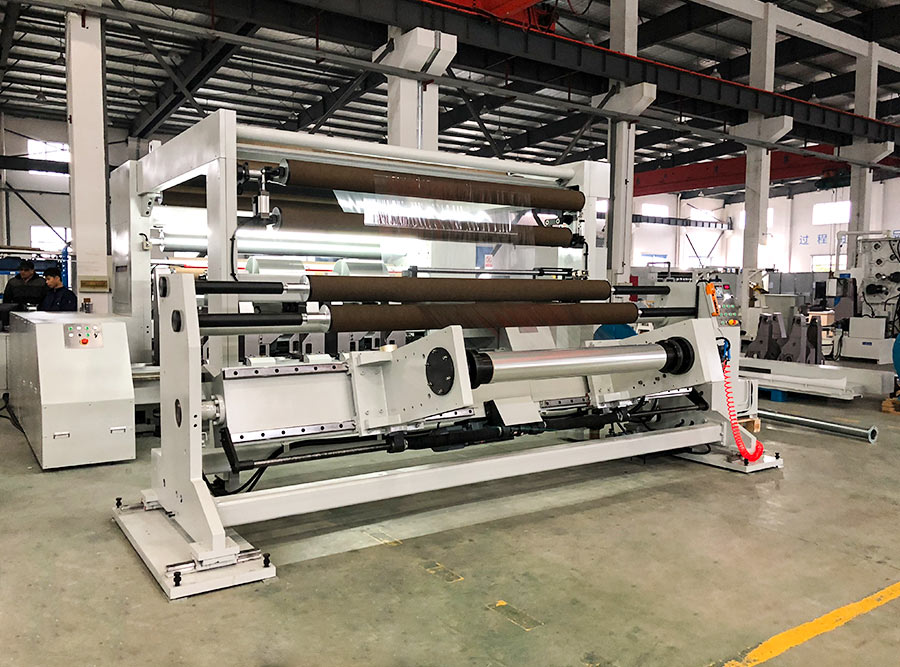The cutting mechanism of a
secondary slitter machine designed for cutting film materials differs from that of other cutting machines used for various materials due to the unique properties and requirements of films. Here are the primary differences in the cutting mechanisms:
Film Slitter Machine:
1. Razor Blades or Rotary Knives: Film slitter machines typically use razor blades or rotary knives as their primary cutting mechanism. These blades are sharp and precise, allowing for clean cuts through thin, flexible film materials without causing damage or distortion.
2. Minimal Contact Pressure: Film slitters apply minimal contact pressure during cutting to prevent stretching, tearing, or deformation of the delicate film. The blades glide smoothly over the surface of the film without exerting excessive force.
3. Tension Control: Precise tension control is crucial in film slitting to maintain even thickness and width throughout the process. The machine ensures consistent tension to prevent wrinkles or distortions in the film.
4. Anti-Static Measures: Film slitter machines often incorporate anti-static measures to minimize the buildup of static electricity, which can attract dust and contaminants to the film surface.
5. Web Guiding Systems: Film slitters may include advanced web guiding systems to ensure that the film maintains proper alignment and position during the cutting process.
6. Slitting at High Speeds: Film slitter machines are designed for high-speed operation, allowing for the rapid processing of rolls of film material commonly used in packaging, labels, and other applications.
Other Cutting Machines (e.g., for Metals, Paper, Textiles):
1. Various Cutting Mechanisms: Cutting machines used for materials other than films can employ a variety of cutting mechanisms based on the material's properties. These mechanisms may include shear cutting, crush cutting, laser cutting, water jet cutting, plasma cutting, and more.
2. Blade or Tooling Materials: The choice of blades or tooling materials varies based on the material being processed. For example, machines cutting metals may use blades made of materials like tungsten carbide, while textile cutting machines may use different cutting tools suitable for fabric.
3. Higher Contact Pressure: In some cases, cutting machines for materials like metals or paper may apply higher contact pressure to effectively cut through thicker or denser materials. The cutting force is adjusted according to the material's properties.
4. Variable Speeds: The cutting speed of these machines depends on the material and specific cutting mechanism. While some may operate at high speeds, others may have slower, more controlled cutting processes.
5. Quality Control and Inspection: Some cutting machines used in industries like metal fabrication or printing incorporate quality control and inspection systems to ensure precise and accurate cuts.
6. Dust and Waste Handling: Materials like paper and textiles often produce more dust and waste during the cutting process, so these machines may have specialized systems for dust extraction and waste handling.
The cutting mechanism of a film slitter machine is specialized for cutting thin, flexible films with minimal contact pressure and precise control. In contrast, cutting machines used for other materials employ a wide range of cutting mechanisms and may apply varying levels of contact pressure, depending on the material's characteristics and requirements. The choice of cutting mechanism and machine design is tailored to the specific material and industry needs.

